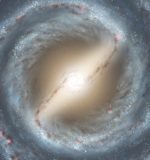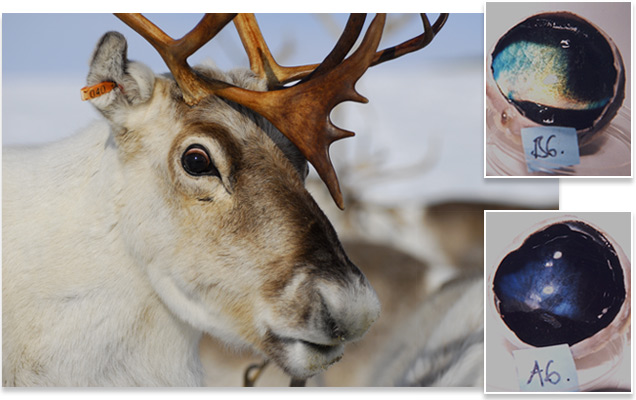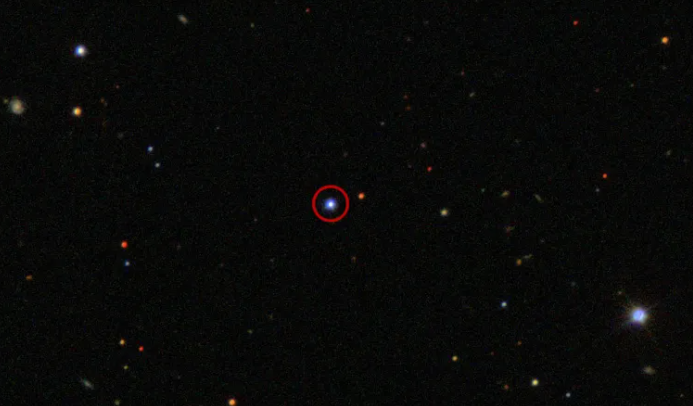It’s no secret that the Milky Way is big, but new research shows that it may be much bigger than we ever imagined. The research, described May 7 in the journal “Astronomy & Astrophysics,” indicates that our spiral galaxy’s vast rotating disk of stars spans at least 170,000 light-years, and possibly up to 200,000 light-years.

It’s hard to fathom just how far that is. If you could ride a light beam from one side of the disk to the other, it would take 200,000 years to span the distance. If you could drive across at an average speed of 60 miles per hour, it would take more than 2 trillion years. That’s about 150 times greater than the age of the universe, which is estimated to be about 13.8 billion years.
For many years, astronomers believed the Milky Way’s disk spanned about 100,000 light-years. Then in 2015, researchers showed that a distance of 150,000 light-years was closer to the mark. To arrive at the new number, researchers turned to a pair of star atlases and studied the chemical composition of thousands of stars in the outermost parts of the galactic plane.

The colored region is the previously known galactic disk. The new research has extended its limits much farther away: there is a probability 99.7% or 95.4% respectively that there are disk stars in the regions outside the dashed/dotted circles. Yellow dot is the position of the sun. Background Milky Way image from “A Roadmap to the Milky Way.”R. Hurt / SSC-Caltech, NASA/JPL-Caltech
The researchers used a statistical analysis to determine that the far-flung stars are chemically similar to the stars in the galactic disk and thus should be considered part of it.
“We were able to confirm that some stars of the outermost regions in the plane belong to the disk,” Martin Lopez-Corredoira, a researcher at the institute and the first author of the article describing the research, told NBC News MACH in an email.
The finding offers further confirmation of the disc’s complex structure, Heidi Newberg, an astrophysicist at Rensselaer Polytechnic Institute and the leader of the research team that revised the size estimate of the Milky Way in 2015, told NBC News MACH in an email. The research also gives a new sense of the sun’s position within the Milky Way.

Spiral galaxy NGC 6744 (shown here) is believed to be similar in appearance to our own Milky Way Galaxy.Dan Goldman
“We are still trying to understand the details of how galaxies form, how spiral structure is formed and sustained, and how elements…are created in stars and then transported through the cosmos so they can be incorporated into planets and life,” Newberg said. “Information on the extent and detailed structure of the disk help answer these questions.”
Previously, it was thought that the sun orbits the center of our galaxy at about half the galactic radius. But now we know that some stars are more than three times that distance from the galaxy’s center possibly more than four times that distance — so while the sun hasn’t made any surprising moves, it’s much closer to the center of the galaxy than we thought.
One thing that hasn’t changed is the number of stars in the Milky Way.
“Although we have increased the size of the galactic stellar disk, the number of stars and the total mass of the galaxy [are] not significantly affected because the outermost disk…has a very low density of stars,” Lopez-Corredoira said in the email.
Astronomers believe the Milky Way contains about 200 billion stars.








 Photographer Finds Locations Of 1960s Postcards To See How They Look Today, And The Difference Is Unbelievable
Photographer Finds Locations Of 1960s Postcards To See How They Look Today, And The Difference Is Unbelievable  Hij zet 3 IKEA kastjes tegen elkaar aan en maakt dit voor zijn vrouw…Wat een gaaf resultaat!!
Hij zet 3 IKEA kastjes tegen elkaar aan en maakt dit voor zijn vrouw…Wat een gaaf resultaat!!  Scientists Discover 512-Year-Old Shark, Which Would Be The Oldest Living Vertebrate On The Planet
Scientists Discover 512-Year-Old Shark, Which Would Be The Oldest Living Vertebrate On The Planet  Hus til salg er kun 22 kvadratmeter – men vent til du ser det indvendigt
Hus til salg er kun 22 kvadratmeter – men vent til du ser det indvendigt  Superknepet – så blir snuskiga ugnsformen som ny igen!
Superknepet – så blir snuskiga ugnsformen som ny igen!  Meteorite That Recently Fell in Somalia Turns Out to Contain Two Minerals Never Before Seen on Earth
Meteorite That Recently Fell in Somalia Turns Out to Contain Two Minerals Never Before Seen on Earth  Nearly Frozen Waves Captured On Camera By Nantucket Photographer
Nearly Frozen Waves Captured On Camera By Nantucket Photographer  It’s Official: Astronomers Have Discovered another Earth
It’s Official: Astronomers Have Discovered another Earth 